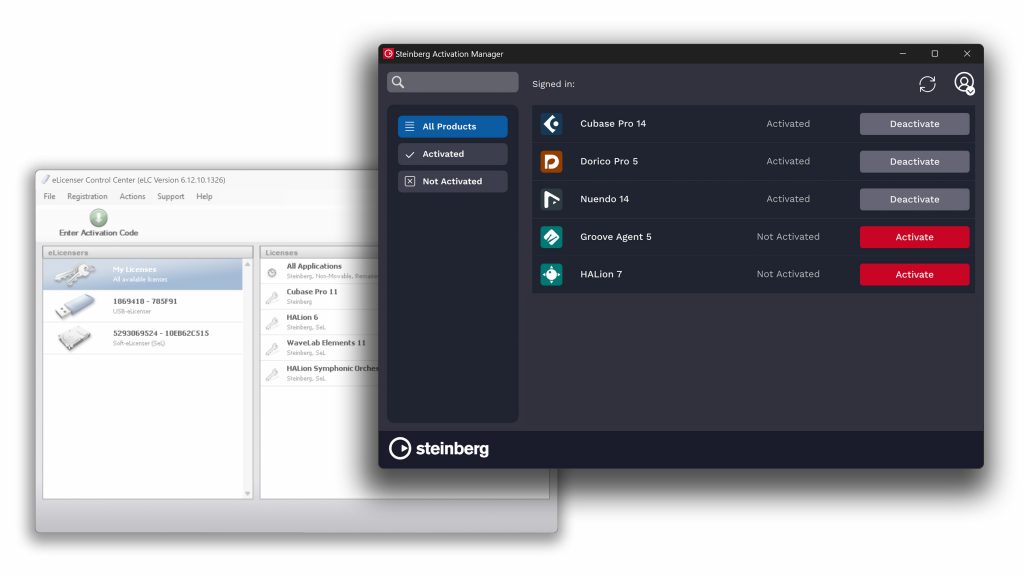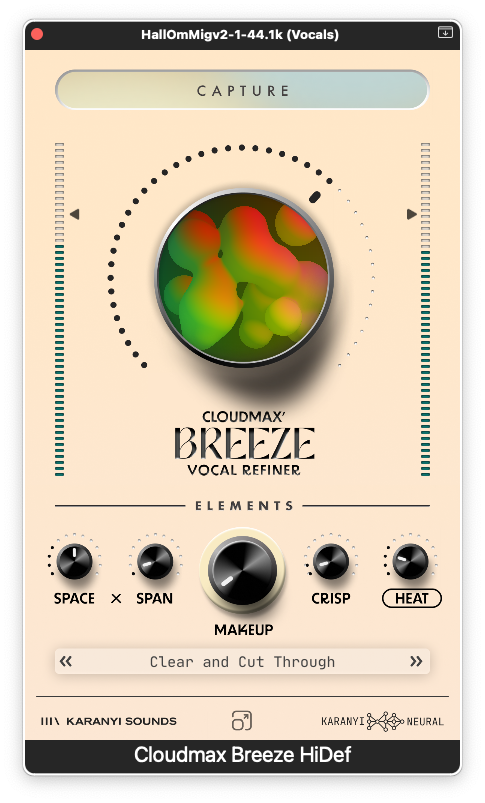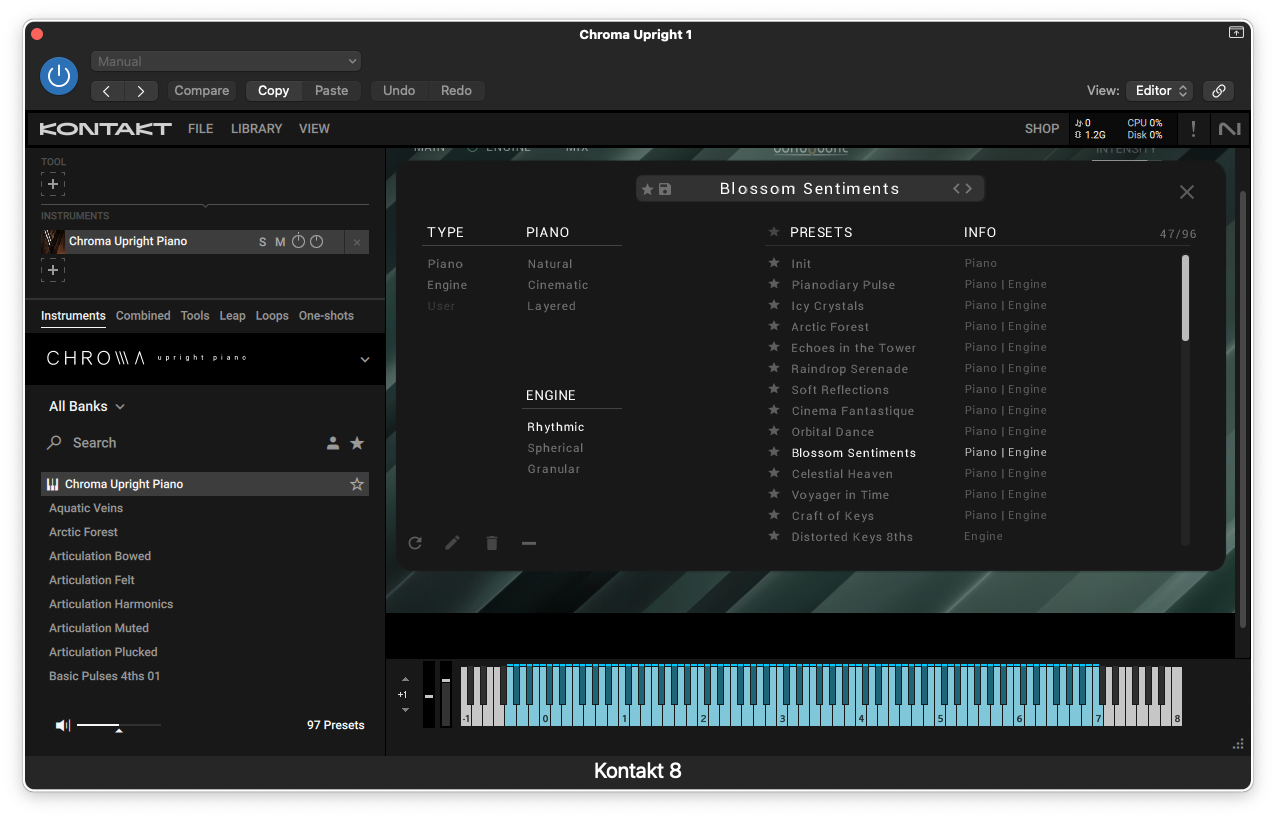
Software Review
A TRULY SPECIAL PIANO
Once in a while you find this very special instrument. It might even be so special that you wonder why no one told you about it before.
Chroma Upright Piano is just such an instrument.
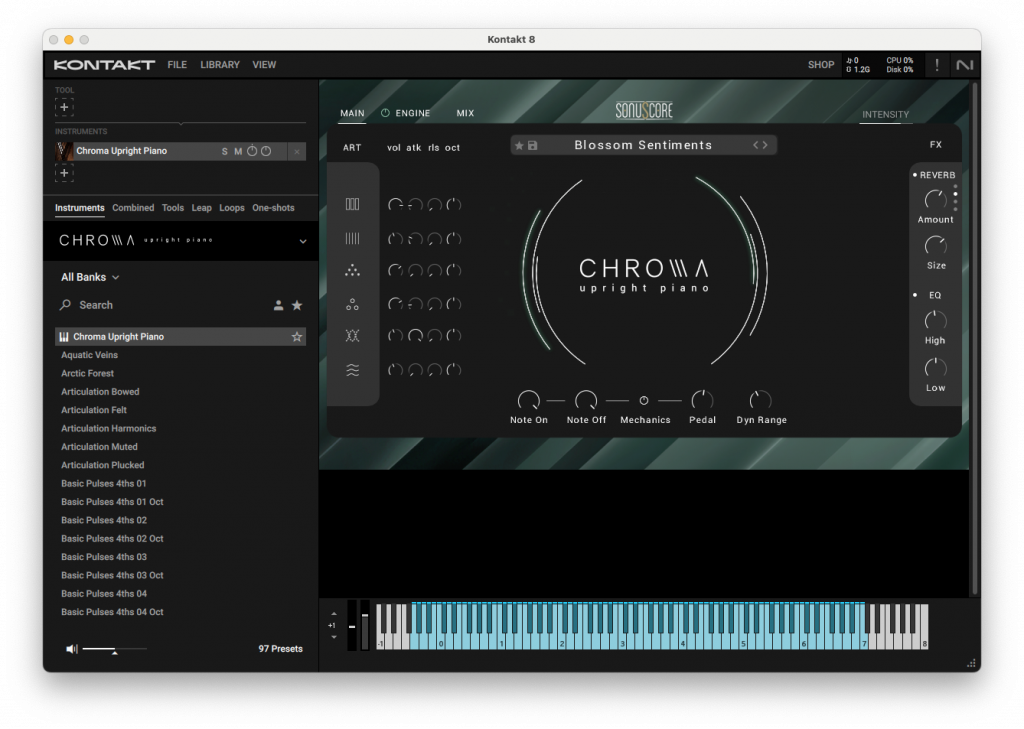
Chroma – Upright Piano stands out a little bit extra, not just because it has such a rich history, or because it has been magnificently restored, but more for its unique character and the emotions it can convey.
It all started in a small studio where Sonuscore’s team was going to sample a grand piano. Be that as it may, someone happened to see another and much less conspicuous piano – a regular so-called “upright”, or Joanna as they used to say. When you played a few notes on this piano, you discovered that it sounded absolutely magnificent – although perhaps a little out of tune. However, it was convincing enough to decide to give it a major facelift in the form of a thorough restoration and tuning. This piano just had to be sampled and shared with the world.
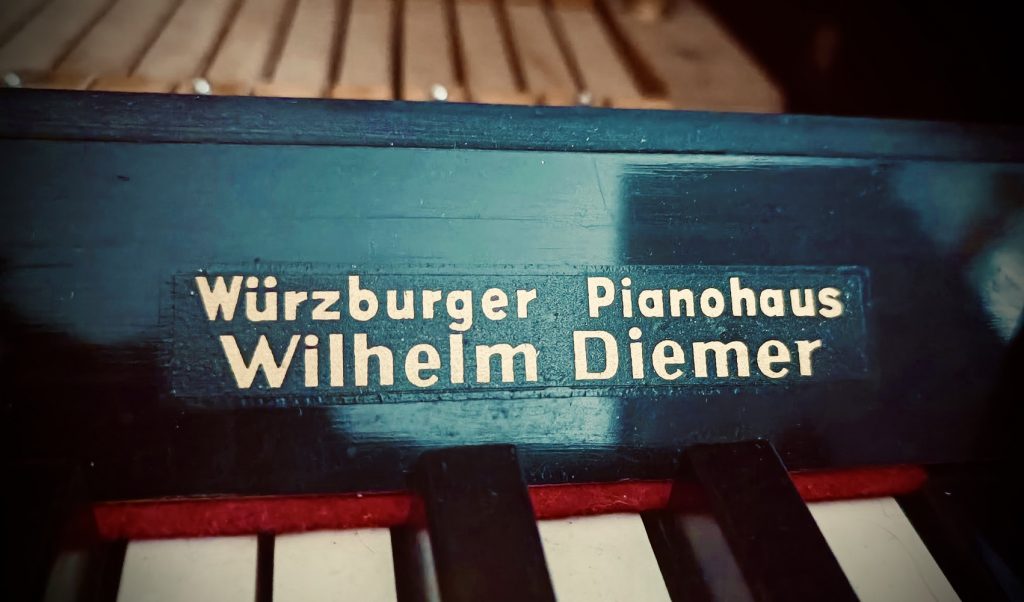
Würzburger Pianohaus
The piano came from a small manufacturer, Wilhelm Diemer, who had a workshop in Würzburg, Germany. Diemer pianos were known for their brilliant quality and distinctive sound. This particular copy was approx: 100 years old and after the careful restoration it turned out to have all the acoustic properties that had been hoped for, and now it is available in sampled form as Chroma – Upright Piano.
In fact, Jonas Hausotter, one of the engineers behind the sampling of Chroma, found out that the studio that originally housed Chroma – Upright was going to close, and so he was given the opportunity to purchase the old treasure. The piano is now with Hausotter in Mainz.
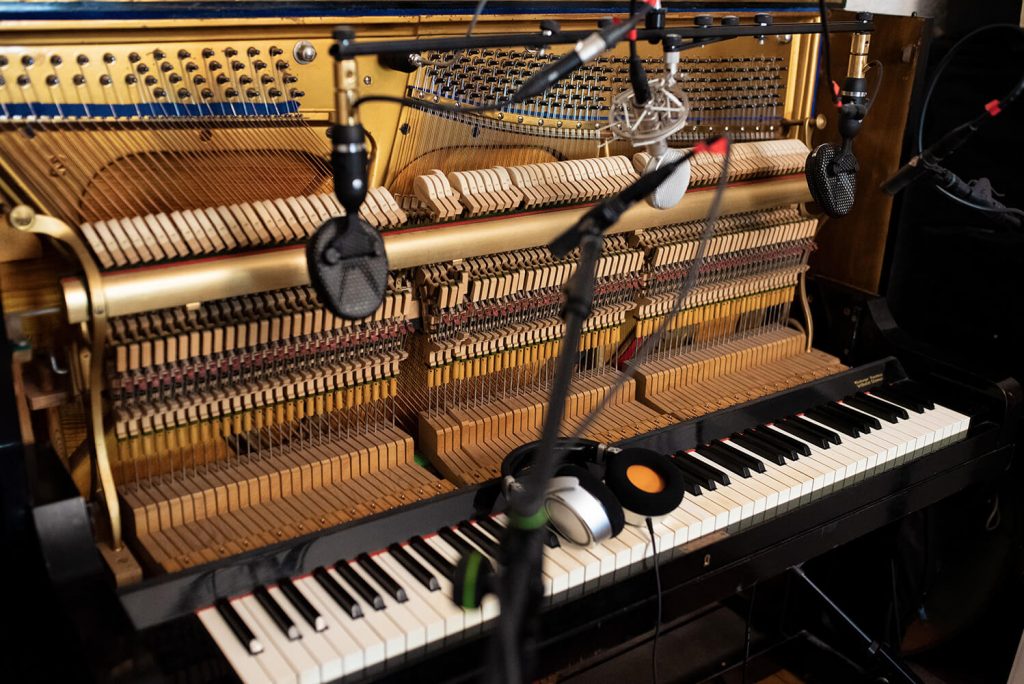
The recording
Recording an upright piano may sound straightforward, but truly capturing its acoustic soul requires a sensitive approach. Jonas reveals the diverse array of microphones used to ensure every nuance could be preserved:
“We used a whole set of different microphones – many more than on a grand piano. In front of the piano we had two Coles 4038s really close to the strings and another ribbon mic in the middle to fill out the stereo image. Above, we placed a pair of Neumann km140 at a distance, somewhere between 0.5 and 1 meter from the piano, and a pair of Schoeps mk5 even higher to capture the whole instrument.
Below we had a pair of Gefell m930s under the keyboard and a pair of Sennheiser mkh8020s behind the piano. And let’s not forget the RUMBLE position – a single LOM Audio Geophone attached to the metal chassis, providing a unique depth of sound.”
This detailed microphone placement allows the Chroma – Upright Piano to offer a rich, multidimensional soundstage. Whether you want the intimate closeness of the ‘Front’ position or the wider perspective from ‘Above’, each microphone captures a different aspect of this piano’s character.
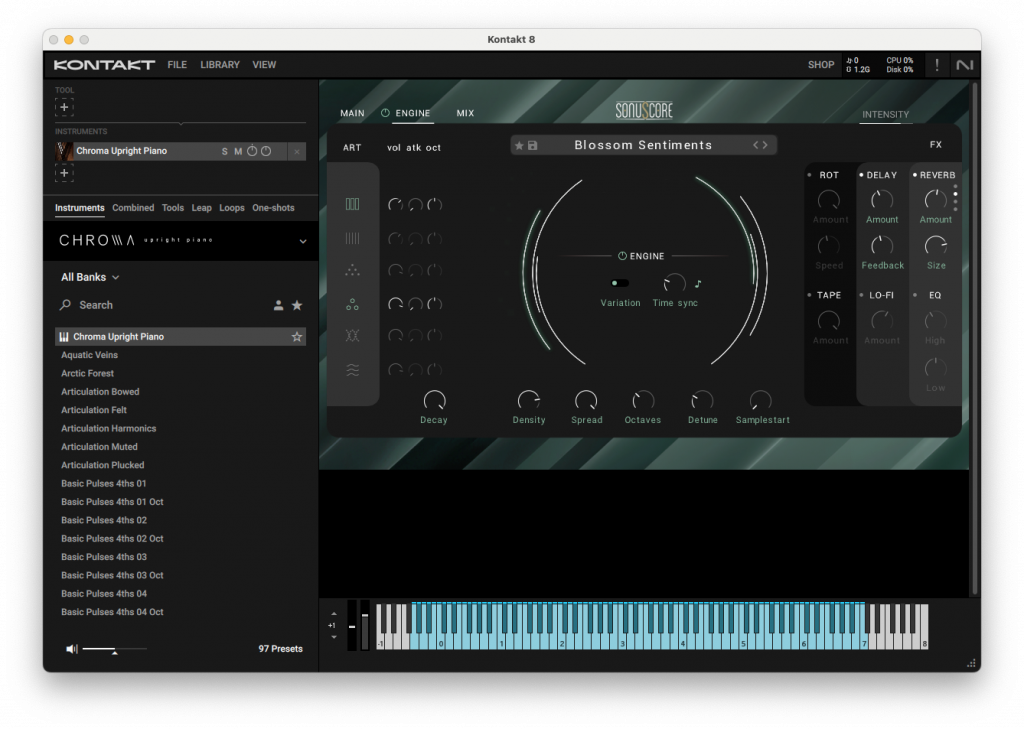
The articulations: The source of creative expression
What really sets Chroma – Upright Piano apart from other piano libraries is the Chroma method: the articulations. They didn’t just record the standard tones; they pushed the boundaries and included both felt, muted, plucked, flageolet and string articulations. Each one offers a unique texture and emotional depth, which can provide a large palette to paint your musical stories.
“The felt sounds really good! We also recorded muted notes because we loved them so much on the grand piano we sampled earlier. Picked notes – probably my least favorite because it was killing my fingers – and flageolets, which sound really cool with their harmonic content. And this time we used a real violin bow instead of an E-bow,” explains Jonas.
In NI’s Kontakt, these articulations can be mixed and played in parallel, allowing you to explore a wide range of emotions and textures, from the soft, intimate whisper of felt notes to the incredibly beautiful overtones of flageolets and literally everything in between. It’s a playground for creativity, offering you the tools to create deeply expressive and unique compositions.
Round Robins bring your music to life
Round Robins are an often overlooked feature, but they play a critical role in bringing a sampled instrument to life. Chroma – Upright Piano has eight different Round Robins that alternate, and they also sampled 27 touch layers for the standard and felt articulations, even more than they did for Croma – Grand Piano. This makes every note you play feel organic and dynamic, capturing the subtle nuances that make real pianos so captivating.
“It makes the instrument more alive because you capture so many small nuances with the small differences in touch,” notes Jonas. This attention to detail means Chroma – Upright Piano responds to your touch just like a physical piano, adding depth and realism to your playing.
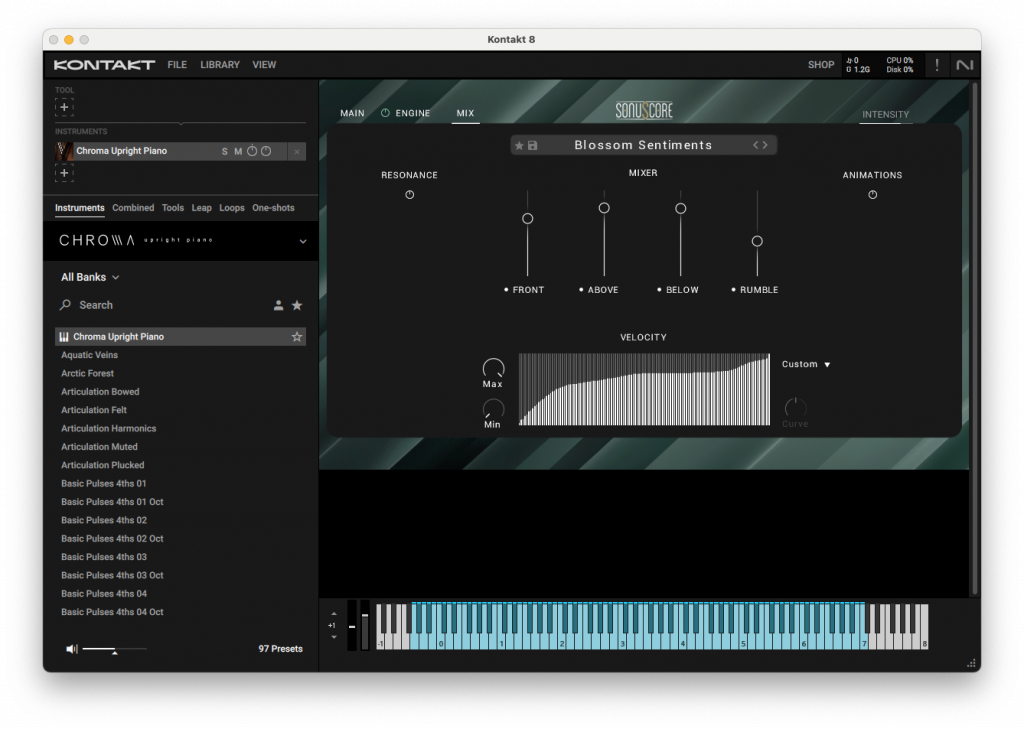
Is Chroma – Upright Piano a better piano then?
Yes, it is in any case very different with its whole set-up; sampled with lots of different microphones, its many different articulations – and the possibility to mix these, 91 different factory settings (preset) and 27 different touch levels for a very nuanced and dynamic sound.
And yes, I probably also think it sounds better than most upright pianos I’ve listened to. There is a warmth in the sound that you rarely find in the sampled world. And the feeling when playing the Chroma – Upright Piano is also very special. You get extremely close to the feeling you can experience when you play a really good physical piano.
Chroma – Upright Piano is a very useful piano for both quiet piano ballads in the singer/songwriting tradition, for composing film scores, for traditional pop music and everything in between.
It’s also an excellent complement to Sonuscore’s Chroma – Grand Piano, if, against all odds, you think a grand piano takes up a bit too much space in the mix – we’re of course also talking about the sampled version.
In addition to the possibility of mixing different articulations, you also have the possibility to vary the amount of mechanical sound that normally occurs when pedaling and hammering on keys.
Conclusion
With Chroma – Upright Piano, Sonuscore presents a very useful and good-sounding alternative to all sampled full-size grand pianos that can be encountered in the music world. It has a warm, soft and full character and lots of different articulations that you can control in real time with modulation wheels, or other control devices via NKS. I was especially fond of the felt-muffled articulation and the flageolet variant, but also the plucked articulation felt both exciting and useful at the same time.
Chroma – Upright Piano has been sampled with no less than 27 different pitch levels and this naturally contributes to the truly realistic feeling you get when playing the piano. This one comes highly recommended!
System requirements
• Works with the free version of KONTAKT PLAYER
• KONTAKT Version 7.10.4 or later
• macOS 10.15 or later
• Windows 10 or later
• 8GB RAM (more recommended)
• At least 17 GB of free hard disk space. SSD is recommended
• Some of the presets for CHROMA – UPRIGHT PIANO need a powerful CPU to run smoothly; an Intel i7 processor or better is recommended.
Facts
Sampled upright piano
INFO & DEVELOPMENT Sonuscore, www.sonuscore.co,
PRICE Chroma Upright: 149 euros; crossgrade from Chroma Grand Piano to Chroma Upright: 99 Euro; Chroma Upright + Chroma Grand Bundle: 239 Euros
PLUS
- Sounds absolutely beautiful
- NKS compatible
- Works with the free Kontakt Player version
- 27 velocity layers
- About 90 different presets
- You can mix different articulations
- Four different microphone positions
MINUS
- Why hasn’t anyone told me about Chroma – Upright Piano before?
Links
INFO https://www.sonuscore.com/shop/chroma-upright-piano/
Here you can listen to some of the presets that Chroma – Upright Piano offers:
